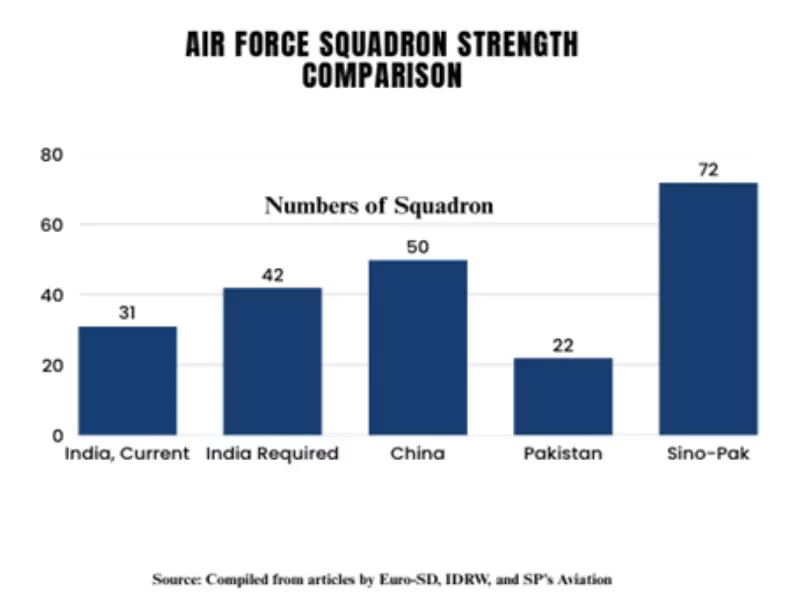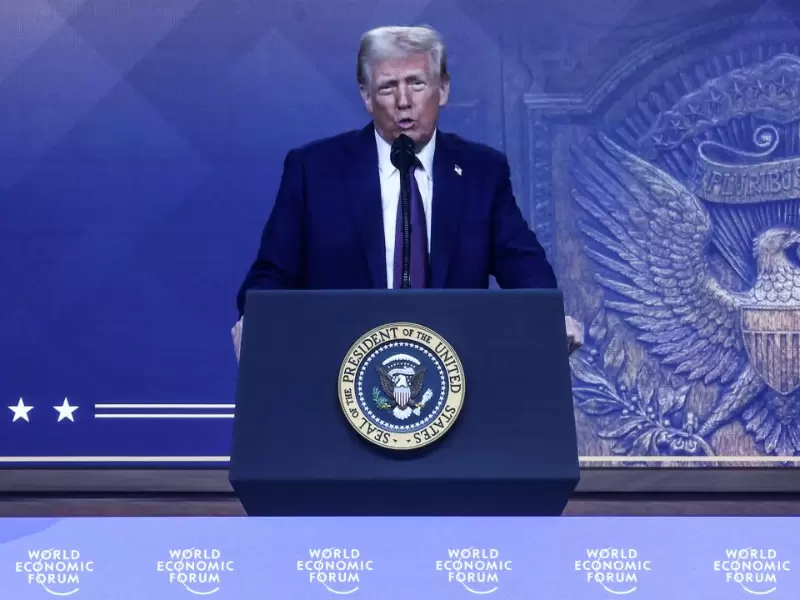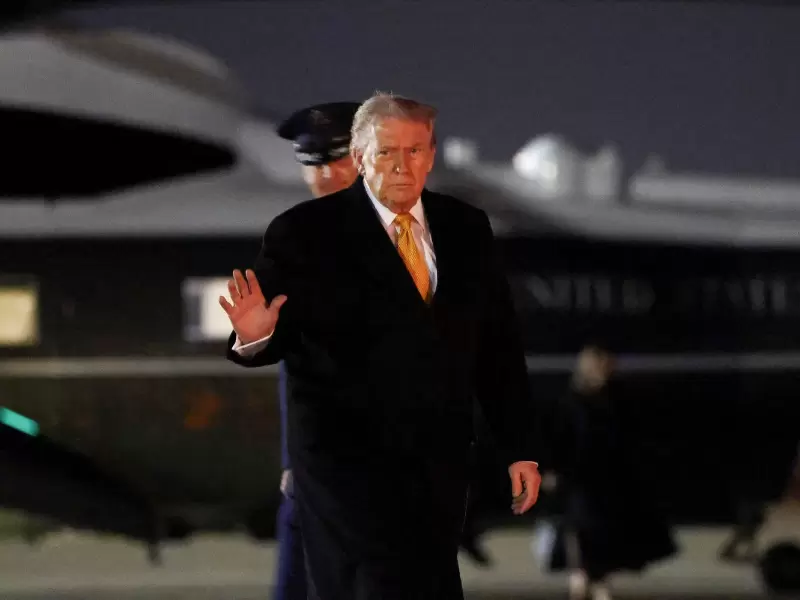Operation Sindoor and India’s urgent need for fifth generation stealth fighter jets
India still lags behind in the race for fifth-generation stealth fighter jets (FGFJ), which can evade enemy radar and penetrate deep into hostile territory without being detected in the air defense system.
 Operation Sindoor / Courtesy: @adgpi via 'X'
Operation Sindoor / Courtesy: @adgpi via 'X'
On the midnight of May 7, 2025, India launched a counterterrorism mission, “Operation Sindoor,” in response to the Pahalgam terror attack. The Indian Air Force (IAF) deployed frontline aircraft, including Rafale, Mirage 2000, and Su-30 jets. Rafale jets, armed with SCALP and Hammer missiles, struck nine terror targets, destroying terrorist camps like Muridke and Bahawalpur, amongst others.
According to official statements, the operation was conducted through standoff precision strikes without Indian aircraft crossing the Line of Control. However, to operate undetected inside heavily defended enemy airspace would require proven fifth-generation stealth and sensor-fusion capabilities such as those found in platforms like the F-35.
However, even in such operations, fighter jets had to be extremely cautious of enemy radars and integrated air defense systems. Pakistan today is not only relying on Sino-backed air defense systems like HQ-9B but also benefits from real-time military data sharing from Beijing. These conditions increase the risk and complexity of future cross-border operations for Indian forces.
India still lags behind in the race for fifth-generation stealth fighter jets (FGFJ), which can evade enemy radar and penetrate deep into hostile territory without being detected in the air defense system. These FGFJs use radar-absorbing material, which is crucial for reducing radar signature and enhancing fighter jets' stealth capabilities.
As India pursues a new counter-terrorism doctrine, any major terrorist act on its soil will be treated as an act of war. To execute such bold operations deep inside enemy territory with air dominance, India urgently needs fifth-generation jets. India is building its own AMCA program.
Further, both Russia and the United States have offered FGFJ to India. But India can’t wait for the indigenous AMCA till 2035; India needs stealth technology now to counter threats and match the Sino-Pak fleet. While the F-35 is battle-ready, the SU-57 continues to face concerns about reliability.
Air squadron strength deficiency
India’s urgency for fifth-generation jets comes from various factors, including the regional security dilemma posed by China’s deployment of J-20s and Pakistan’s J-10s. These developments, combined with the assertive military posture of the Sino-Pak alliance, have reinforced the likelihood of a two-front war scenario.
Currently, IAF operates only 31 squadrons, whereas the required strength is 42 squadrons. A squadron is the basic operational wartime unit of an air force, consisting of aircraft and personnel assigned a specific task.
The deficiency of 11 squadrons translates to a shortage of approximately 200 aircraft. In contrast, China has over 50 squadrons, while Pakistan maintains 22 squadrons. In wartime scenarios, a higher number of squadrons means greater combat capabilities.
To effectively counter wartime adversaries in a potential two-front war scenario between India and Sino-Pak, IAF urgently needs at least 42 high-quality squadrons equipped with FGFJ.
 Air Force squadron strength comparison / Courtesy: Shubham Thorat
Air Force squadron strength comparison / Courtesy: Shubham ThoratExploring India’s strategic options
1. Limited import or lease of F-35 jets
One option might be to import a small batch of 15-20 F-35s from the United States. This would give India short-term entry into stealth technology. However, there are roadblocks. Considering India's earlier purchase of the Russian S-400 air defense system, the United States can limit India's usage of the S-400 air defense system. Further, the expense of acquiring a complete squadron of F-35s would critically affect the development of the AMCA program.
Buying a limited number of F-35s would still grant India crucial entry into stealth technology. This step would help India develop experience in operating, maintaining, and integrating fifth-generation assets, which can shape future indigenous programs and strengthen its strategic posture.
Another strategy would be to lease sophisticated fighter aircraft rather than purchase them outright. India has a long history of leasing military equipment to fulfill the immediate operational and functional needs of its armed forces. The United States has leasing agreements with India. India has previously leased military equipment with success.
The possibility of leasing fifth-generation jets is low compared to other military equipment due to several issues, such as technology transfer, training, and the high cost of losing military equipment. But the Pentagon could explore options like subsidizing or leasing F-35 jets to India as China pushes to dominate the Indo-Pacific, which U.S. Secretary of War Pete Hegseth recently called a “hegemonic power.”
India is a key United States partner to counter Beijing’s rise in the Indo-Pacific, as India is expanding its defense ties with Indo-Pacific nations like the Philippines (through the BrahMos missile deal) and Vietnam, boosting regional deterrence against Beijing. Its active role in the Quad, maritime partnerships, and U.S. defense industrial cooperation makes India a key security provider and vital U.S. partner in shaping a free and open Indo-Pacific.
In this context, India is in a strong position to assert that, to embolden its efforts in countering common challenges, Washington needs to consider offering the F-35 to India on lease or at a subsidized cost.
The United States previously offered subsidized access to advanced military platforms like the F-35 to the allies, such as Israel. A relevant model could be the foreign military financing program, which enabled Israel to procure F-35s at a significantly reduced cost. As a developing nation taking on expanding security responsibilities in the Indo-Pacific, India deserves comparable treatment to maintain the regional balance of power and counter China.
2. Manned-Unmanned Teaming (MUM-T) to bridge India’s Air Power Gap
Manned-unmanned Teaming is a strategic wartime strategy that integrates manned fighter jets with unmanned platforms like advanced drones to support operations. The United States has successfully conducted the MUM-T strategy with Apache helicopters and unmanned aerial vehicles (UAVs), and recently the Indian Army also demonstrated advanced MUM-T capabilities in the Sarvashakti exercise, which can work as force multipliers in wartime operation.
So, a better and cheaper alternative would be to prioritize the procurement of high-end combat and stealth drones with the use of existing 4-4.5-generation fighter jets and accelerate the AMCA program. India has already purchased high-end drones such as the MQ-9B Sky Guardian from the United States.
At the same time, India may fast-track indigenous drone development programs, including the Ghatak UCAV, meant to support future fifth-generation fighter aircraft. While drones cannot fully replace manned stealth aircraft like the F-35, the MUM-T strategy can enhance India’s immediate air combat capabilities.
3. Strategic outlook
Considering the recent India-Pakistan conflict and the combined assertive Sino-Pak military posture, India must prepare for near-future operations. The evolving Sino-Pak threat demands a balanced approach that addresses both immediate operational requirements and long-term air superiority.
India should adopt a dual-track strategy:
- In the short term, prioritize the acquisition of a limited number of F-35s or expand MUM-T capabilities with drones like Ghatak and MQ-9B, consider leasing advanced fifth-generation fighters, and deepen interoperability with key partners like the United States and western like-minded partners.
- In the long term, accelerate the development and deployment of the indigenous AMCA to secure strategic autonomy and future air superiority.
It is high time India needed to advance its defense inventory with high-tech stealth fifth-generation fighter jets. Such capabilities also strengthen India’s deterrence against terrorist and cross-border threats.
ADVERTISEMENT
ADVERTISEMENT
E Paper
Video



 Shubham Thorat
Shubham Thorat











Comments
Start the conversation
Become a member of New India Abroad to start commenting.
Sign Up Now
Already have an account? Login